Review for Oreimo: Series 1 Collection
Introduction
One thing that bugs me a little is when people say that they hate anime. After all, anime isn’t a genre, it’s a medium, which tells all sorts of stories in a myriad of styles, and for all kinds of audiences. From the family friendly Ghibli movies to the hard-hitting adult films like Berserk, there is something for everyone. But by that same token, there’s no rule saying that an anime fan will like everything that they watch. As in all entertainment, some shows are good, some shows are bad, yet very rarely now do I find that there is subject matter that I won’t touch. If I do have a line in the sand when it comes to anime though, it’s the incest taboo.
Most recently I had a whinge about its appearance in an otherwise entertaining show, Beyond the Boundary, an older brother uncomfortably doting on his younger sister, but it’s appearing more and more often in recent anime, siblings developing inappropriate affections for each other, usually played for laughs with a couple of side characters. On occasion, in shows like Recently My Sister is Unusual, it’s the whole point of the show. Usually I can eyeroll my way through it, idly remarking on a sour note in an otherwise entertaining show, sometimes it’s done tastefully enough that it just looks like an over the top protective obsession, with overtones that can be dismissed, and sometimes I just have to switch off, but fortunately I’ve avoided having to seriously review this stuff. Until now.
Then again, it might be how you tell the story. It doesn’t all have to be yuks and fan service. Koi Kaze, a show I’ve never seen by the way, is a critically acclaimed anime drama that apparently takes a more thoughtful and emotionally honest approach, and a lot of anime fans cite it as a show that gets it right. MVM aren’t bringing us Koi Kaze. They’re releasing Oreimo Season 1, quickly followed by Season 2. Oreimo is short for Ore no Imoto ga Konnani Kawaii Wake ga Nai, which translates as My Little Sister Can't Be This Cute. My stomach is already trying to crawl out of my throat. I have heard good and bad things about Oreimo though, good things about Season 1, and bad things about Season 2, and I get to review them back to back. The week after that, the taboo continues with nas-imasaS[at]ianarabnaG! I thoroughly approve MVM. Get all the bad medicine out of the way in one shot. I’ll either be killed or converted to the trope. On the bright side, if I am converted, we can all thank providence that I’m an only child!
Kyosuke Kosaka is a high school student with a typical relationship with his younger sister Kirino. She ignores him completely. She is after all perfect, perfect grades, popular in her middle school, good at sport, and even working a lucrative career in modelling. Being the average older brother means that he might not get the same amount of parental scrutiny, but he also has nothing in common with Kirino. Then one day he bumps into her outside the kitchen and her stuff goes flying. After the usual acerbic comments she leaves, only she’s forgotten one certain item, a DVD case containing an erotic videogame.
The truth comes out. Kirino is a closet otaku. She loves anime, and she loves videogames, particularly erotic videogames about younger sisters. Kyosuke doesn’t have time to be creeped out, as Kirino realises that she finally has someone with which to share her interests. After all, middle school isn’t exactly conducive to otaku, especially a magazine model that has to live up to her popular image at all times. But seeing as her older brother didn’t immediately fly off the handle and tell their parents, Kirino decides that he’ll do as someone to share her hobby with. The first thing to do is to get him acquainted with her favourite games. That’s creepy enough for Kyosuke to decide that the first thing he needs to do is to find Kirino some like-minded friends. But he’s not getting off the hook that easily.
Sixteen episodes of Oreimo Season 1 (12 broadcast and 4 OVA) are presented across three discs from MVM.
Disc 1
1. My Little Sister Can’t Be My Love
2. My Little Sister Can’t Bring Me to an IRL Meet
3. My Little Sister Can’t Be This Cute
4. My Little Sister Can’t Be Going to Summerket
5. My Little Sister’s Best Friend Can’t Be This XX
6. My Childhood Friend Can’t Be This Cute
Disc 2
7. My Little Sister Can’t Be a Novelist
8. My Little Sister Can’t Be This Animated
9. My Little Sister Can’t Be This Absorbed into Eroge
10. My Little Sister Can’t Be Cosplaying Like This
11. My Little Sister Can’t Be This Maid
12. My Little Sister’s Advice Can’t End Here (Good End)
Disc 3
13. My Little Sister’s Advice Can’t End Here (True Route)
14. My Kouhai Can’t Be This Rotten
15. My Kouhai Can’t Be This Cute
16. My Little Sister Can’t Have a Finale Like This
Picture
Oreimo gets a 1.78:1 anamorphic transfer on these dual layer discs, in native PAL format with the 4% audio speed-up that implies. However, Oreimo’s English language releases have been DVD only (Although Aniplex US did import the Japanese Oreimo Blu-ray to sell in the US, which had English subtitles and a extravagant price point), which in this case means that Madman, who authored these discs were apparently working from NTSC SD masters, not HD masters as is usually the case these days. So there is a degree of softness, a lack of resolution that we’ve become unaccustomed to in recent years. That said, it’s a decent transfer, clear, and with consistent colours, and conveyed with the attention to detail that you would expect from a show about otaku, with anime and game merchandising galore filling up the backgrounds. It’s all perfectly watchable, and scales up to an HD panel well enough.
Sound
Oreimo Season 1 is a subtitle only release, and it gets a DD 2.0 Stereo Japanese track. The dialogue is clear throughout, there are no glitches, and the stereo does enough to give the show a decent degree of presence. One thing that’s noticeable is that each episode gets its own end theme, and generally the music for the series is quite decent. The subtitles are accurately timed, but unfortunately suffer from more than the usual number of typos and similar errors.
One significant issue, certainly I found it noticeable was that the sound was out of sync on disc 1. You can definitely notice it in the foley, doors closing and the like, but even with the looser Japanese ADR techniques, it’s noticeable that everyone seems to have an extra lip flap to their dialogue. If you have the sort of player (or software), that can introduce a delay to audio, than 110 ms is a close enough ballpark figure to get things reasonably synced up again. Discs 2 & 3 are unaffected by this.
Extras
The discs present their content with static menus, and there are jacket pictures visible in compatible players. All of the extras are on disc 3.
The Japanese Cover Art Gallery has 8 images, (although on my old CRT set, it mistakenly autoswitches to 4:3).
There are 1:22 of Special Next Episode Previews, none of which are subtitled.
The 15:24 of On Air Ending Collection (x8) similarly lacks subtitles, and offers the broadcast friendly conclusions of some episodes, complete with credit scrolls.
Stardust Witch Meruru Special Opening is the 1:40 credit sequence for the fictitious show that Kirino loves.
Finally there are trailers for Kamisama Dolls, Outbreak Company, and Sankarea.
What are noticeably absent are the textless credits, which is a shame given that each episode gets its own end theme, and while the opening theme is the same, there are variations in animation. Of course that would be another 40-odd minutes of video on the disc...
Conclusion
That was brilliant! I enjoyed every minute of Oreimo, and it completely defied my expectations. It turns out that it’s not about the incest thing, it’s about one character who seeks it out in entertainment form, and how people react to that. That may be a fine distinction to make, but it is distinction enough. You don’t have to agree with a character’s mindset to be entertained by their antics, especially if the writing is good. The writing is very good in Oreimo Season 1. This is a show about fandom, about otaku tendencies, about obsessing over entertainment, and in that respect this show fills a rarefied niche that contains titles like Genshiken, and given that Genshiken isn’t available in the UK (nor is it likely to be), Oreimo really becomes worth seeking out.
Oreimo also further distances itself from accusations of ickiness by making the main character whose perversions tend in this direction, female. To put it frankly, Kirino Kosaka likes playing erotic dating simulations, where it’s the aim for big brothers to ‘conquer’ their little sisters. She likes role-playing the big brother roles, and has something of a fetish for little sister types, which also extends to the kind of anime she watches, and the comics she reads. That she herself is a younger sister to a big brother has absolutely nothing to do with it.
In fact her relationship to Kyosuke is refreshingly typical of any young teenage girl with an older brother. She can’t stand him, and the two haven’t really spoken in years when the story begins. It’s typical the world over, the little sisters that as infants doted on their protective older brothers tend to discover that they are disgusting and obnoxious creatures as soon as they hit their teenage years, and want some independence.
That’s where Kyosuke is, made all the worse by the fact that he’s the average sibling, the one just coasting in his critical father’s eyes. In comparison, Kirino is a bright, shining light, acing all her school exams, a track and field star, and with a successful career as a model, all that and still only in middle school. What does a little sister like that need with an average big brother? Only then Kyosuke goes and discovers Kirino’s dirty little secret, and it becomes something over which the semi-estranged siblings can reconnect. When Kirino realises that Kyosuke’s not going to tell their parents, and if he’s being judgemental, he’s not being too vocal about it, she realises that she finally has someone to share her hobby with. She can’t immediately ditch her disdainful attitude towards him, but it is communication, and no one else in her circle has otaku tendencies.
Kyosuke’s isn’t too enamoured of the idea of playing videogames with his sister, especially ones where big brothers get the wrong ideas about their sisters, but he quickly realises that this is one instance where he can support Kirino. She certainly doesn’t need his help in track and field, or in school, but she can use his help in hiding her hobby from their parents, and when the inevitable does happen, and the truth escapes, he can stand up for her to their parents, and help her ‘non-otaku’ friends accept that side of her life instead of dumping her, although the extremes that he goes to are of concern in themselves. On top of that, he also helps her find like-minded friends that can share her passion so that he doesn’t have to, although that plan doesn’t exactly work out either, and he winds up spending as much time with chunibyou Kuroneko and ninja-fan Saori as Kirino does.
It really does feel a lot like Genshiken in the way that it explores the fan experience, all aspects from video games to anime, to shopping in Akihabara for fan merchandise to visiting a comic festival to buy erotic fan comics, although unlike Genshiken it also looks at the other side as well, disapproving parents, friends disgusted by your hobby, and trying to hide that side of a personality. Also unlike Genshiken, it adds a fair bit of unreality as well, and it turns out that Kirino’s success at everything even transfers to when she turns her hand to creating content instead of just consuming it. I think the show pushes it a little too far when her first attempt at writing a light novel is a big success, and the anime producers come knocking.
The happy ending in episode 12 is a little fantastic too, with the brother and sister’s reconciliation complete in a heart-warming and tear-jerking way. It’s probably the perfect way to end a television series on, giving fans what they want, but it doesn’t quite fit in with the rest of the series. Fortunately the 4 OVA episodes set that to rights, beginning with an alternate episode 12 that shows what ‘really’ happened, and the events that lead on from there, with Kirino at an athletics training camp in the US, and Kyosuke getting by without his sister, but with Kuroneko having started at his high school, needing his help in fitting in.
As for ‘that’ kind of relationship, it’s clearly not even an option for Kyosuke and Kirino, both disgusted by the idea, although they do get teased by their friends. It’s more likely that you’ll be tossing a coin as to which prospective relationship you do support, Kyosuke and his childhood friend Manami, a cute supporting character that helps define Kyosuke beyond just Kirino’s big brother, or Kyosuke’s growing relationship with Kuroneko.
I’ve just scratched the surface of Oreimo, it’s rich with well-crafted characters and its story is enjoyable, funny, dramatic, and touching. It turns out that Oreimo really is a show about the love between brother and sister. It’s about siblings that drift apart due to the usual adolescent reasons, and then finding a reason to connect again, to redefine their relationship as adults and not just as children. Kyosuke learns that he can still support his sister without being the overprotective big brother, while Kirino learns that she can still rely on Kyosuke, even if they don’t have a lot in common. I can see why Season 1 of Oreimo gets the plaudits. Next up is Season 2, and I’m already lowering my expectations.


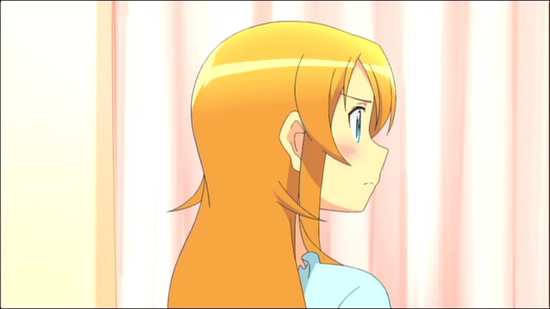
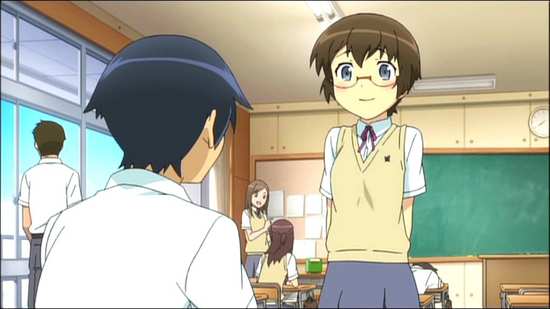
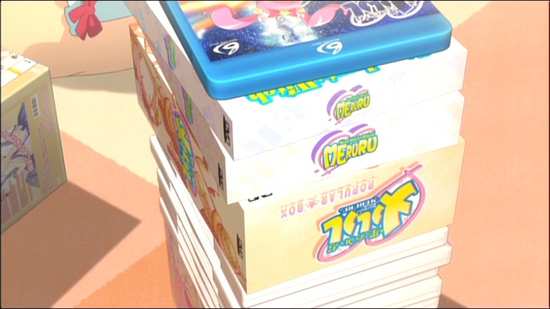
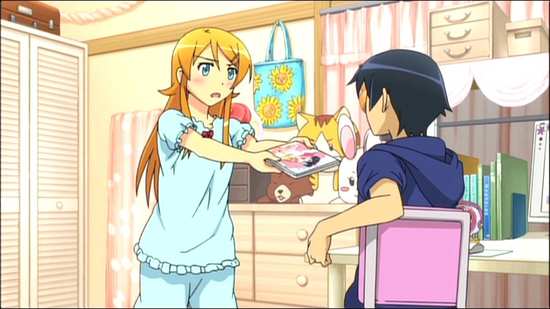
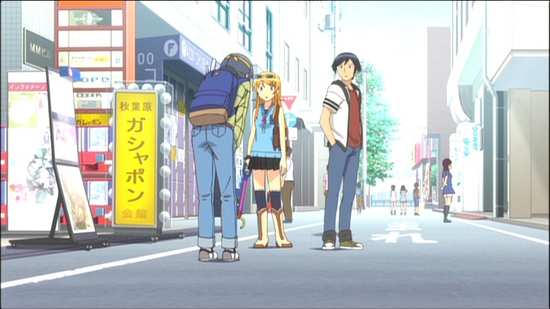
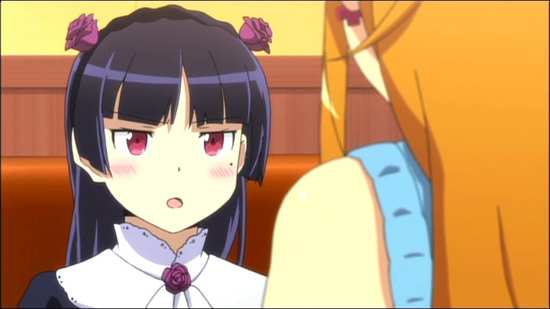
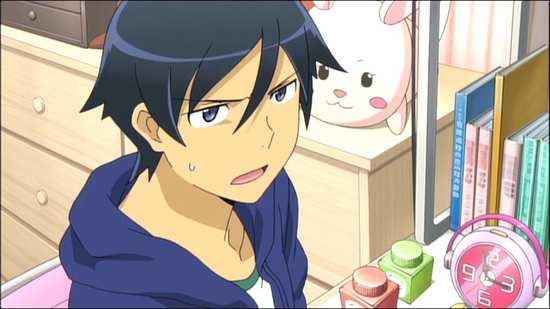
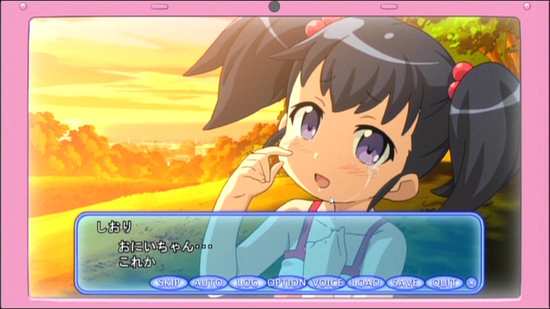

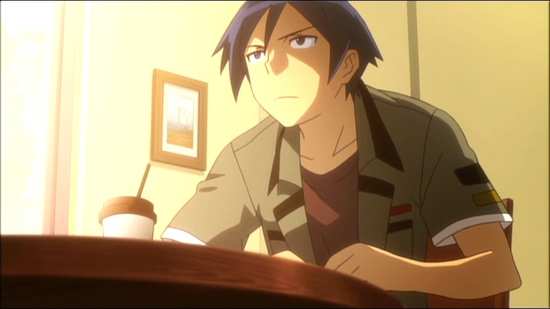
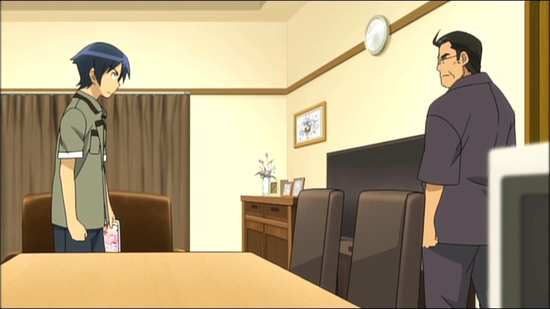
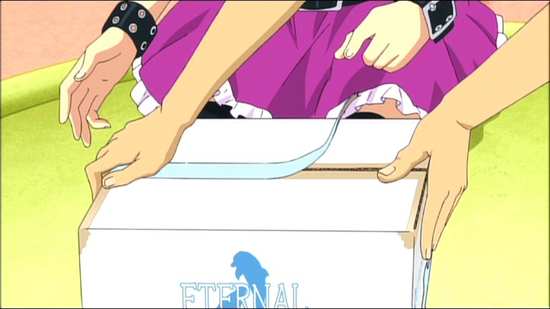
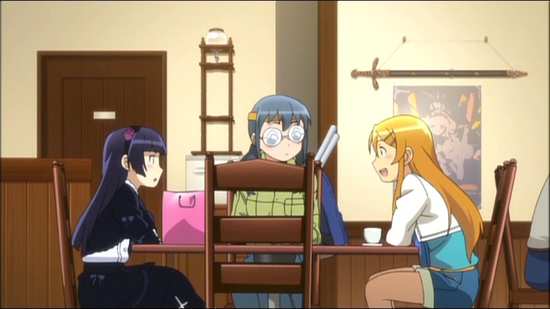
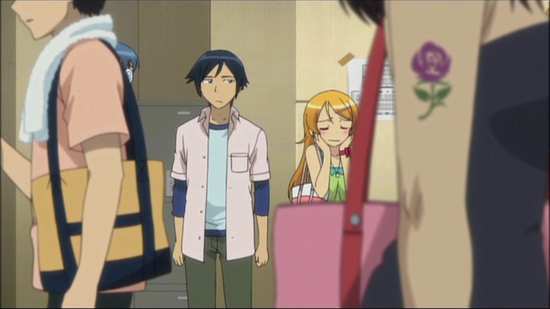
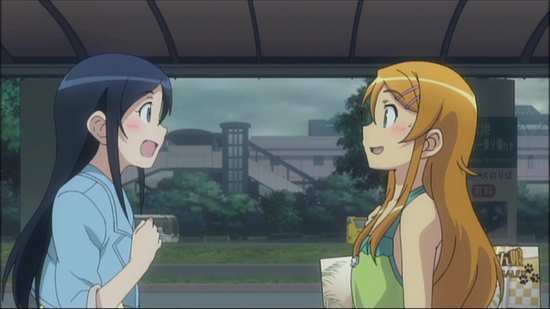

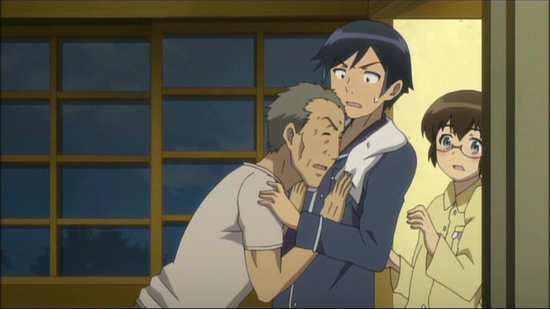
Your Opinions and Comments
Be the first to post a comment!